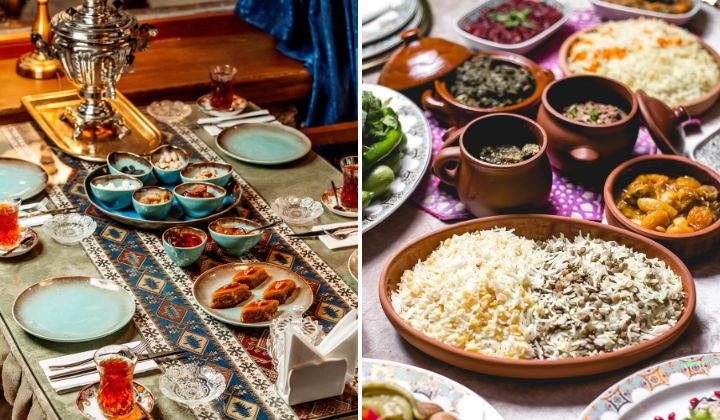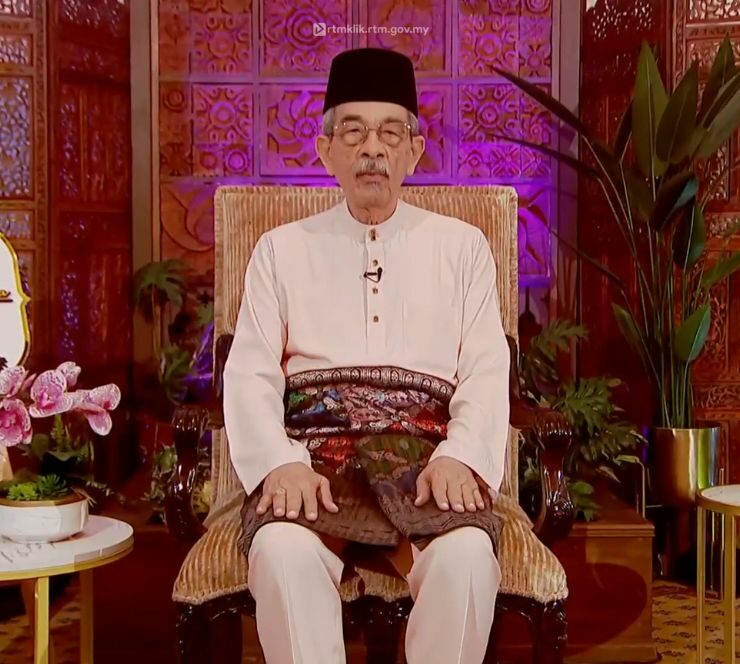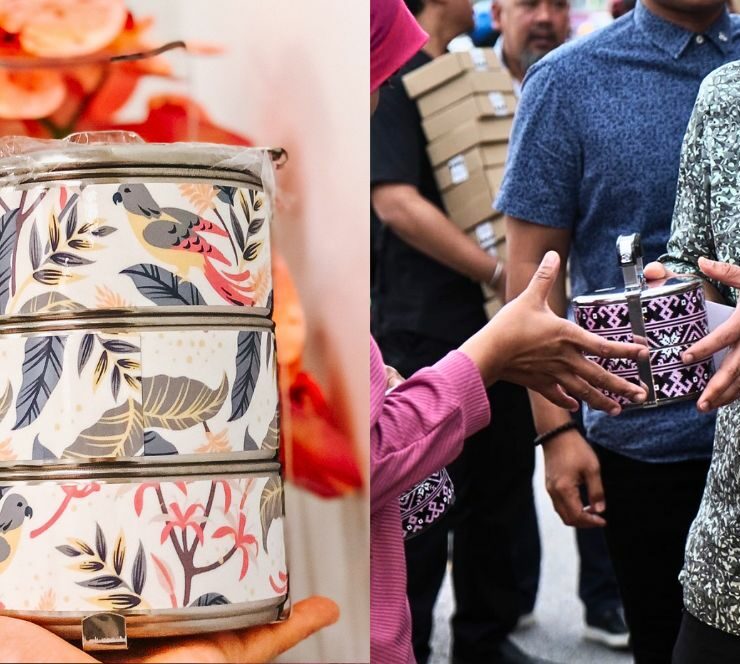Iftar Eats: 11 Buka Puasa Dishes From Around The World
While dates and water are traditional for breaking fast, Muslims worldwide also enjoy a diverse range of foods during Ramadan.

Subscribe to our FREE Newsletter, or Telegram and WhatsApp channels for the latest stories and updates.
Ramadan isn’t just something that Muslims in Malaysia observe. An estimated 2 billion Muslims globally honour this holy month. Ramadan encourages Muslims to be more spiritually disciplined and emphatic towards the less fortunate.
While dates and water remain synonymous with breaking fast, there’s a wide variety of foods that Muslims around the globe enjoy during Ramadan. These foods are usually culturally significant, high in nutritional value, or simply just a must-have on their tables annually.
Here are 11 foods that people around the world love to buka puasa with:
Samosa (India)
Originating in the Indian subcontinent, samosas are deep-fried pastries filled with spiced potatoes, peas, or minced meat. These little triangular pockets are best enjoyed piping hot, dipped in cold and tangy mint chutney for an extra kick. They’re also seriously addictive.
Harira (Morocco)
Harira is a Moroccan soup with a base of tomatoes, lentils, chickpeas, and spices such as saffron and cayenne. This hearty bowl is often consumed during Ramadan but is also popular during winter seasons. It’s also a staple at Moroccan family gatherings and celebrations.
Ful Medames (Egypt)
Ful Medames is an Egyptian dish made with fava beans, olive oil, and various toppings. “Medames” originates from a Coptic (ancient Egyptian) term that means “buried.” This reflects the slow-cooking process, where pots are buried in embers and allowed to simmer for 6-8 hours. This dish is also commonly consumed for sahur, because of how nutritious and filling it is.
Nihari (Pakistan)
Nihari is a slow-cooked stew of meat particularly associated with the Mughal cuisine. Although it originated in India, the dish was popularised in Pakistan by Muslim migrants after the partition of India in 1947. Traditionally, Nihari was prepared overnight for 6-8 hours in large pots for working-class labourers, who were involved in the construction of Mughal forts and palaces.
Mie Glosor (Indonesia)
Mie Glosor, known for its slipperiness and slurpiness, is a well-loved dish among our neighbours to break fast. Popular in West Java, Indonesia, these noodles are simple, light, and easy to eat, making them a great option for iftar. They’re typically cooked with veggies, turmeric, mustard seeds, and topped with peanut sauce.
Bubur Lambuk (Malaysia)
Bubur lambuk is a traditional congee made with rice, meat, coconut milk, and aromatic spices. This dish symbolises community, as mosques nationwide serve it during iftar to bring people together. There are different variations of this bubur regionally and the history of how it came to be so femes in Malaysia is pretty conflicting, but interesting.
READ MORE: Do You Know Where Bubur Lambuk Came From? Let’s Get Down To History
Nafaqo (Somalia)
“Nafaqo” translates to ‘nutrition’ in Somali and this straightforward snack offers just that. To prepare nafaqo, hard-boiled eggs are wrapped with a dough of mashed potatoes, turmeric, and flour, then coated in breadcrumbs and deep-fried. They’re pretty similar to Scotch eggs and some parts of Somalia actually prepare them in the same way, using minced meat instead of potatoes.
Nisholda (Uzbekistan)
Italians have meringue, Americans have marshmallows, but Uzbeks have nisholda. Nisholda is a very sweet dish prepared exclusively during Ramadan. It’s made primarily of egg whites, sugar, and water. It’s a preferred dish to break fast with because of its high sugar content after hours of abstaining from food and is often used as a dip with warm flatbread.
Qatayef (Middle East)
Qatayef is like a sweet karipap. While our karipaps are usually filled with savoury fillings, qatayefs are stuffed with anything from crushed walnuts to cheese, raisins, rose extract, or minced meat. The word ‘qatayef’ itself refers to the batter used to make the dessert, which primarily consists of flour, baking powder, water and yeast.
Baklava (Turkey)
Baklava is a sweet treat with layers of thin pastry filled with chopped nuts and sweetened with syrup or honey. Eating baklava during Ramadan is a tradition that goes back to the 15th century, as recorded in Ottoman palace documents. The Baklava Procession was a prominent custom that took place on the 15th day of Ramadan. Hundreds of trays of baklava were prepared in the palace kitchens and the first tray was presented to the sultan.
Chorba Frik (Algeria)
Typically served with Algerian kesra (flatbread), Chorba frik is a frik-ing good soup that includes ingredients such as beef or lamb, tomatoes, onions, chickpeas – but the real star of the show is a unique component called frik. Frik, or freekeh, is a type of wheat harvested while green. It’s then roasted and de-husked, imparting a distinct taste that’s cherished throughout Algeria.
Whether you choose to enjoy samosas and baklavas, or bubur lambuk and murtabak, we hope that this Ramadan brings you peace, joy, and blessings beyond measure!
Share your thoughts with us via TRP’s Facebook, Twitter, Instagram, or Threads.





